
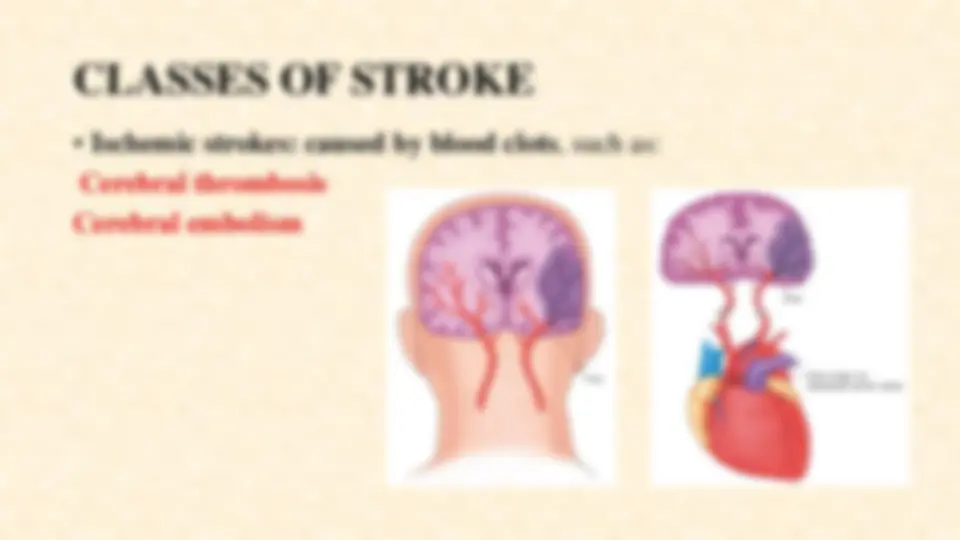
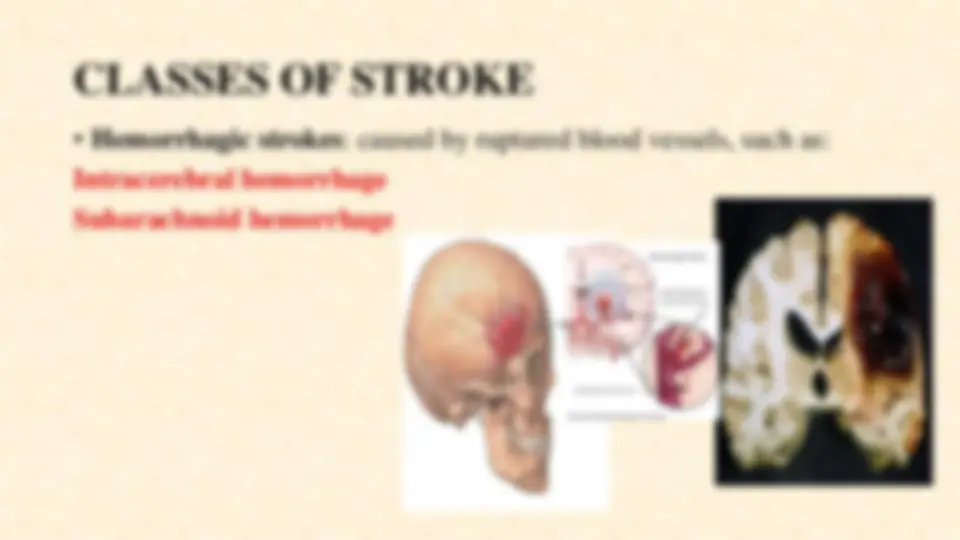
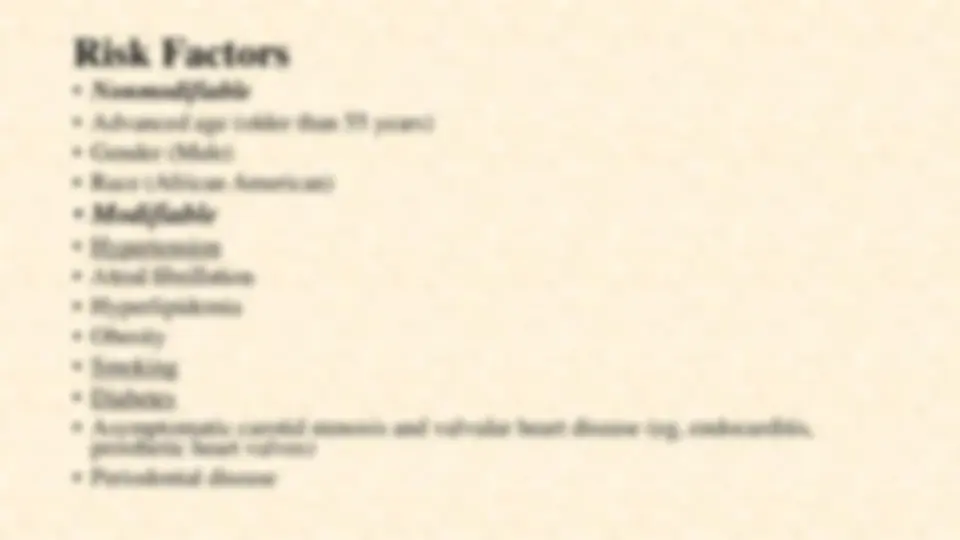
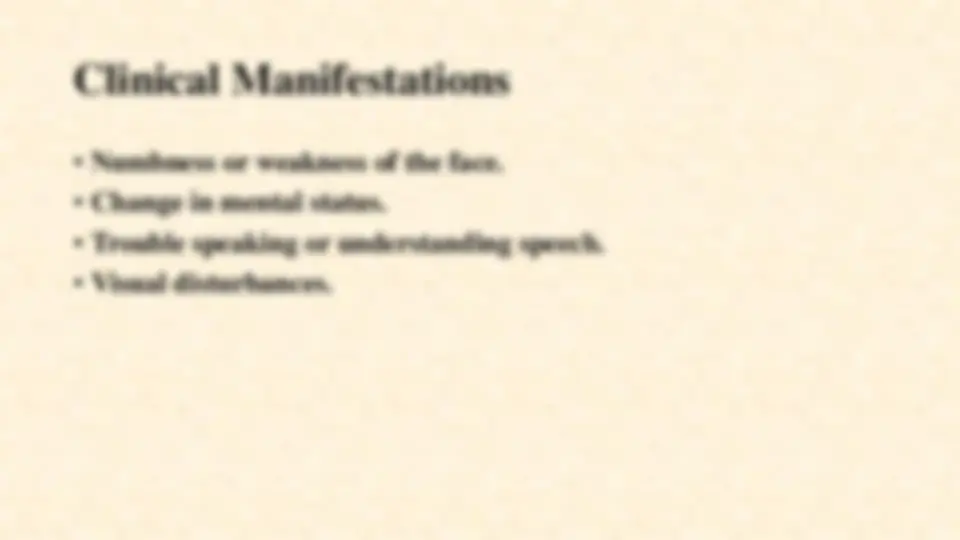

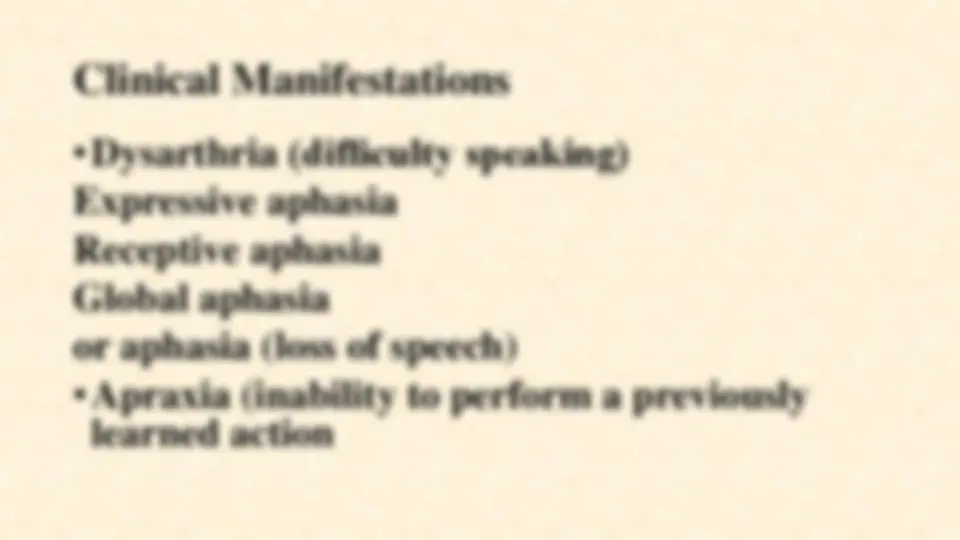
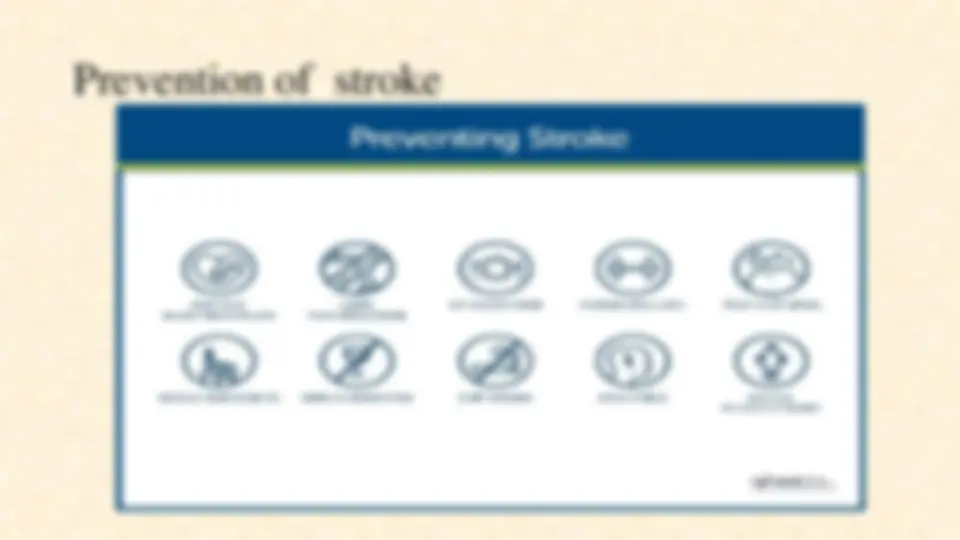
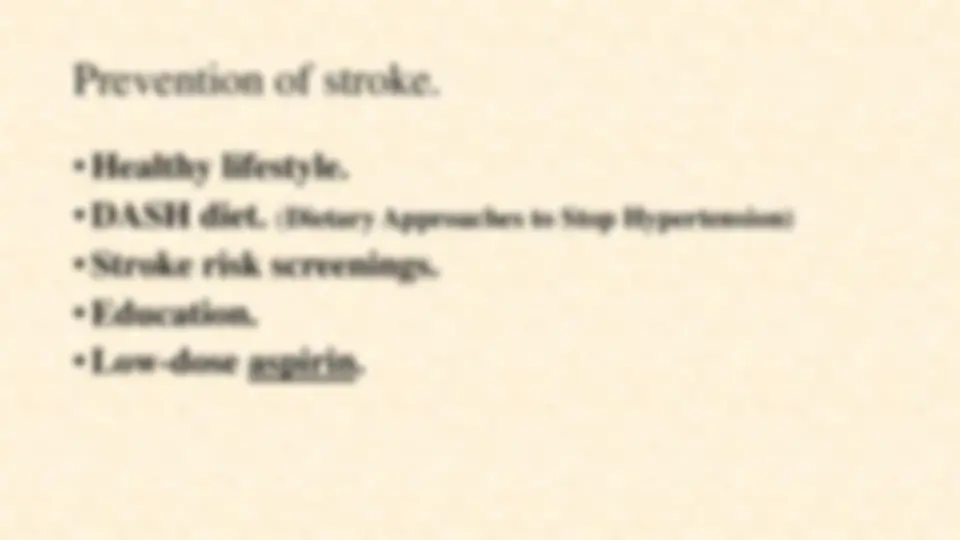
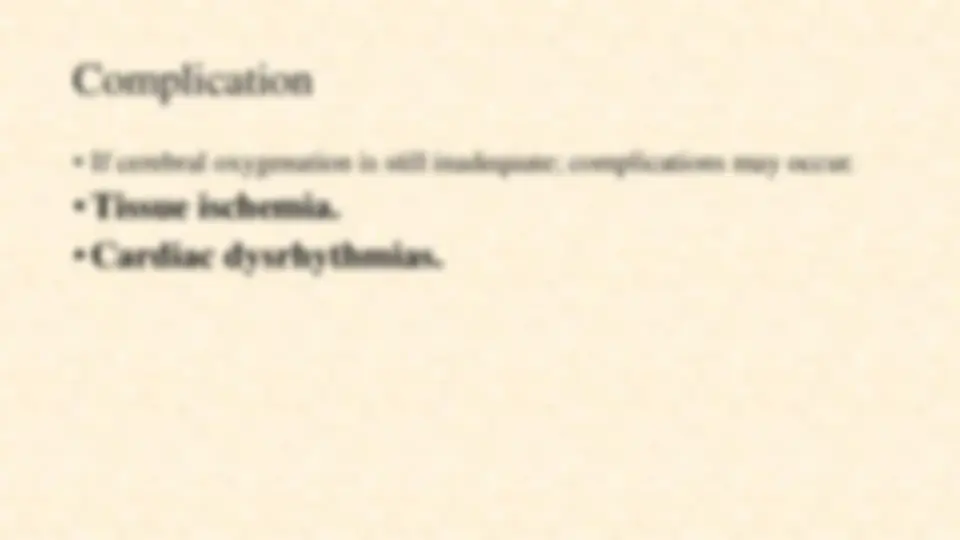
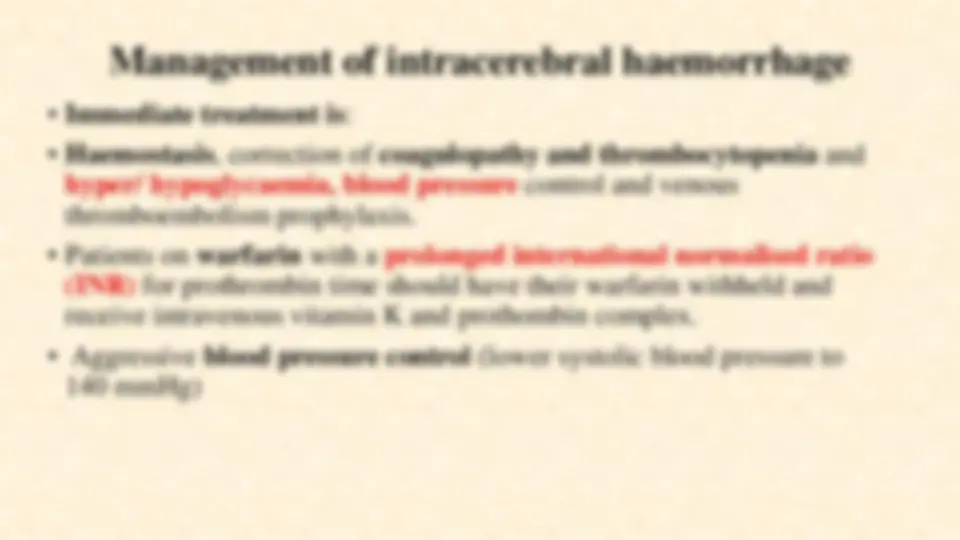
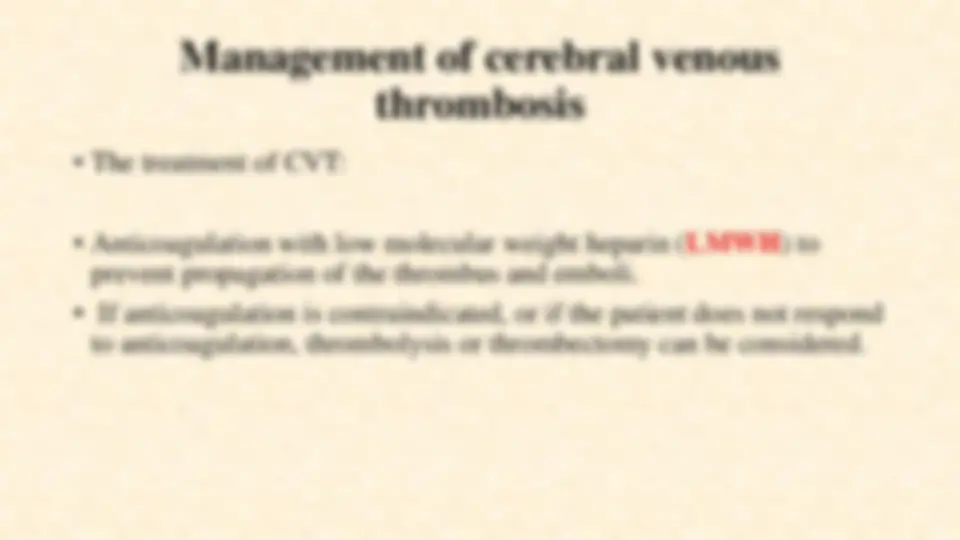
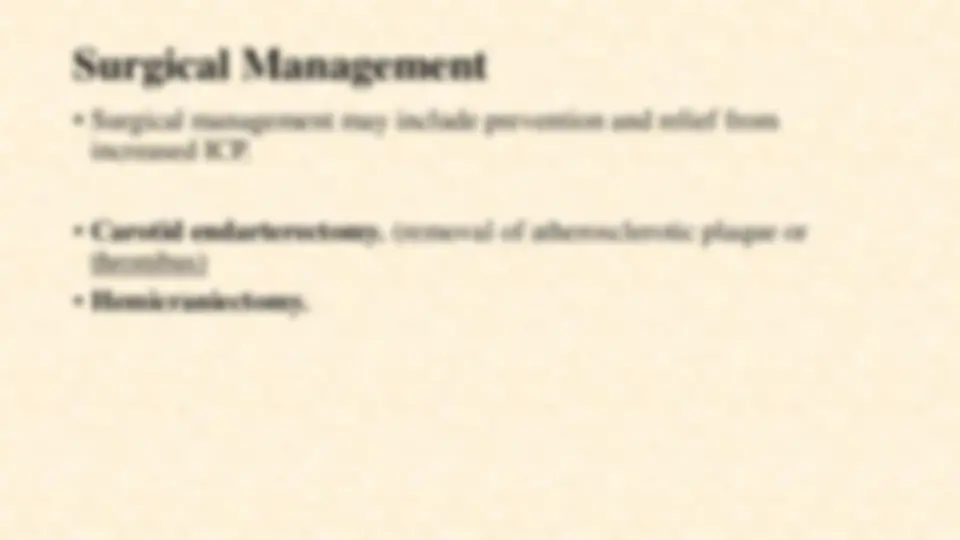
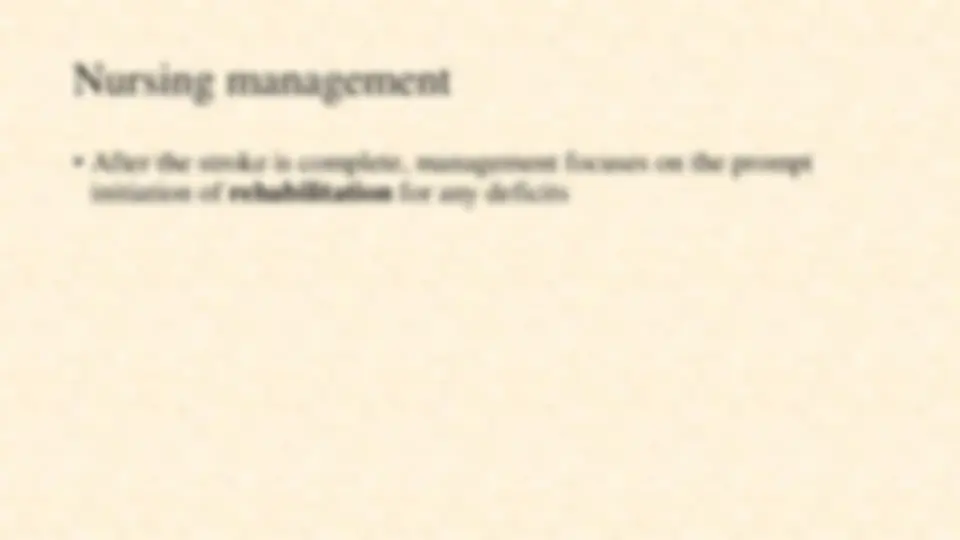
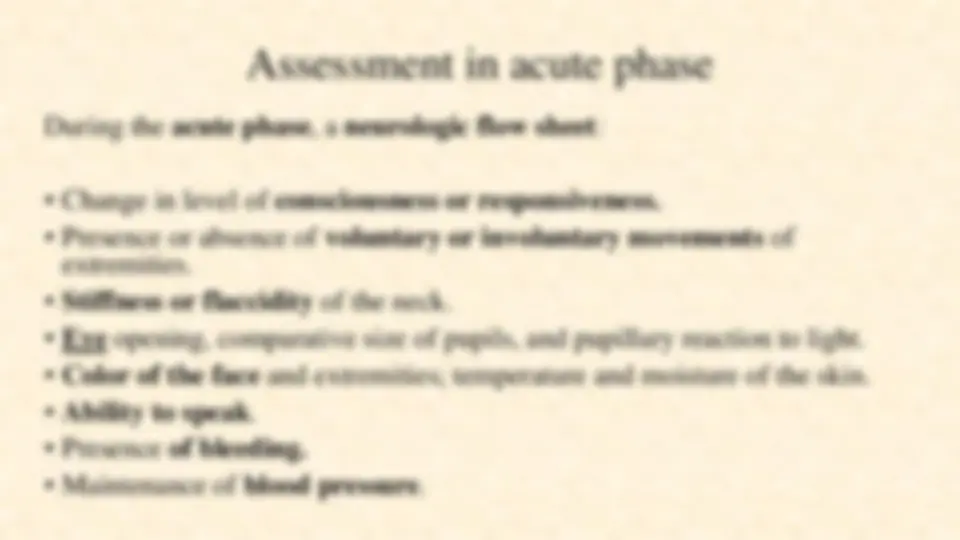
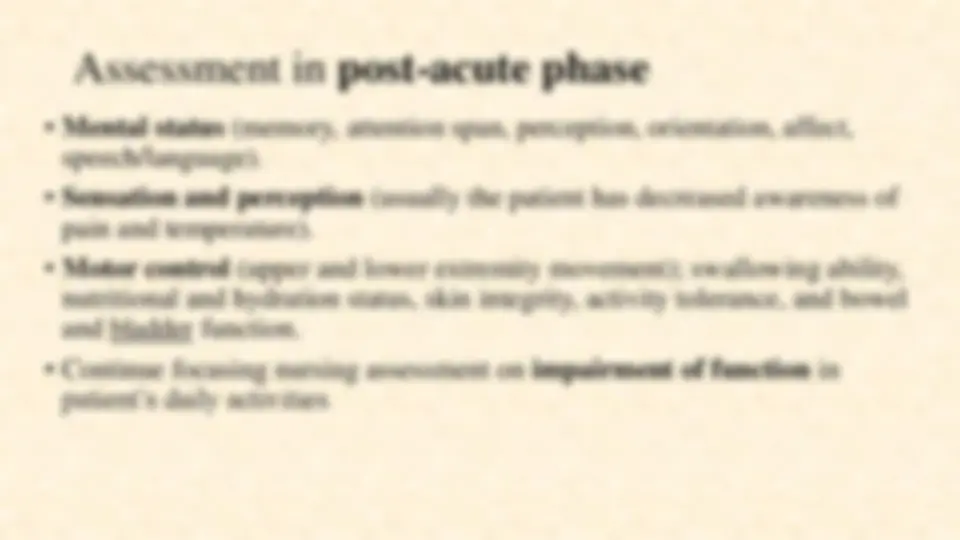
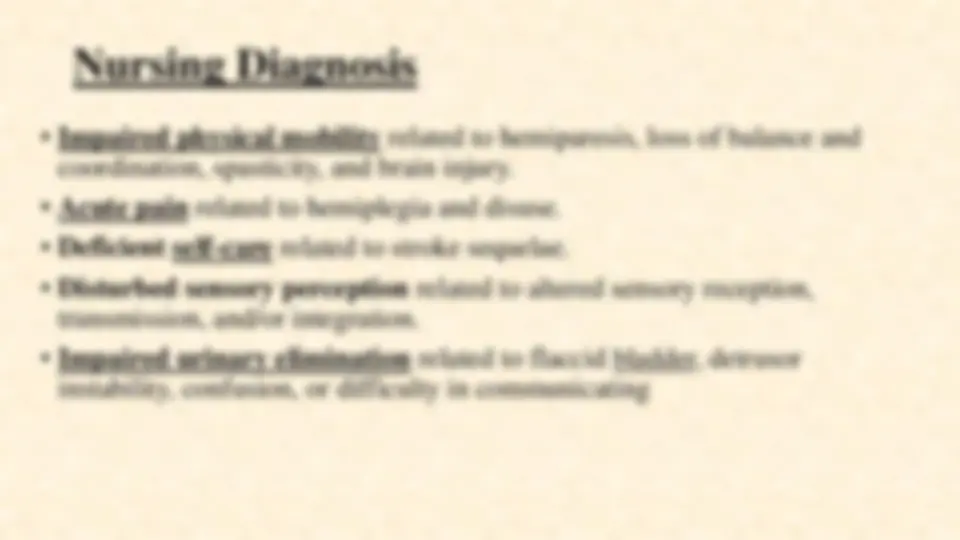
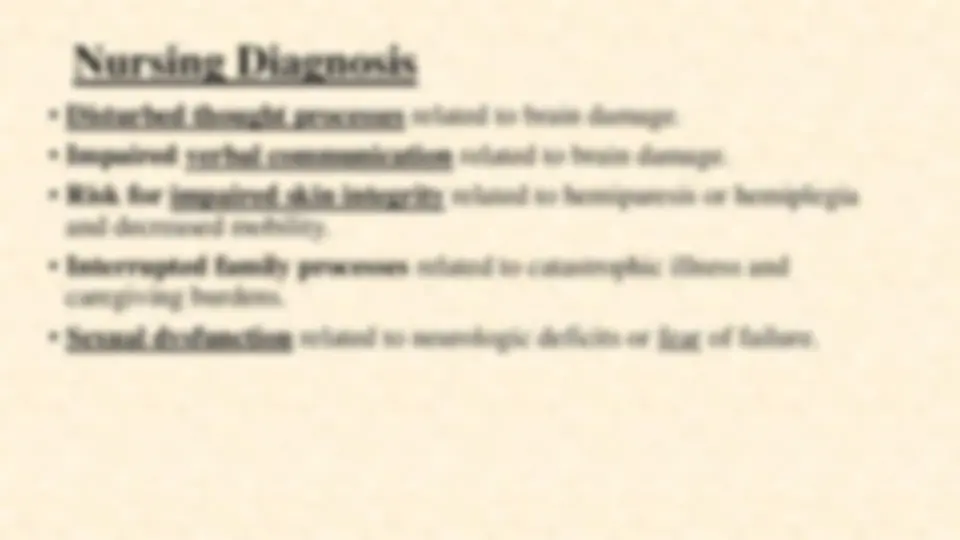
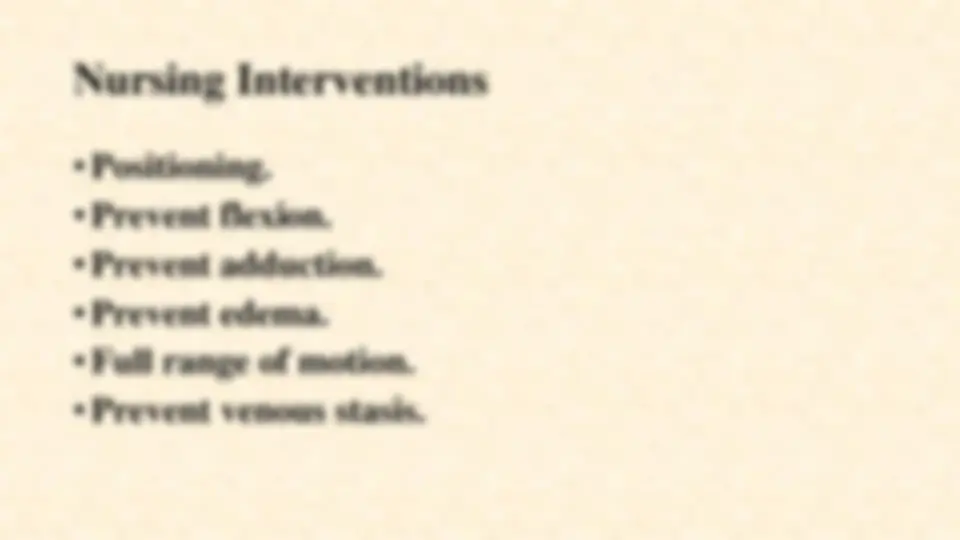
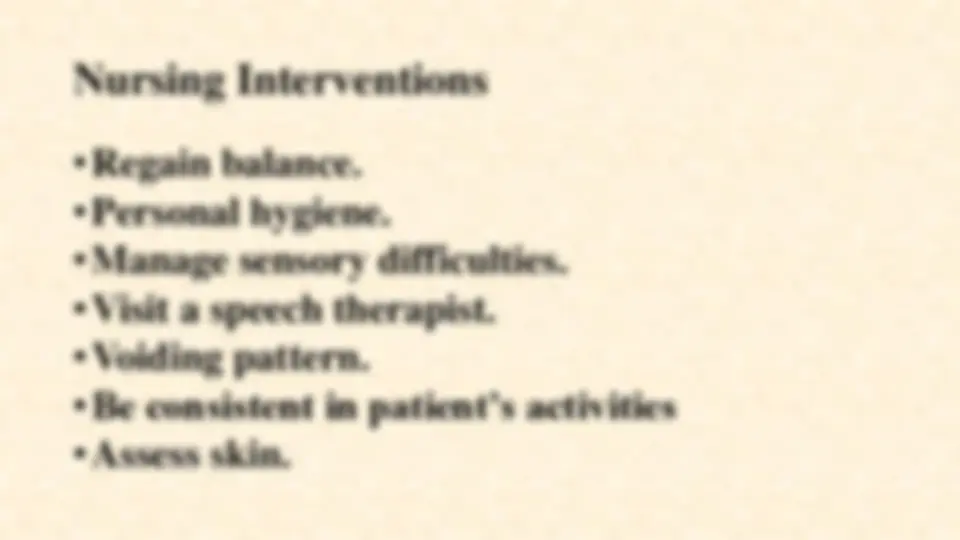
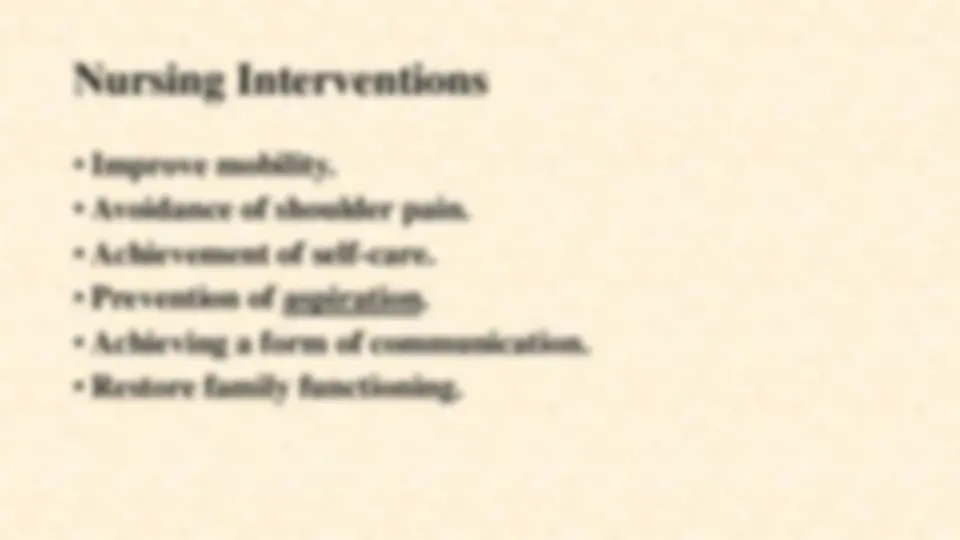
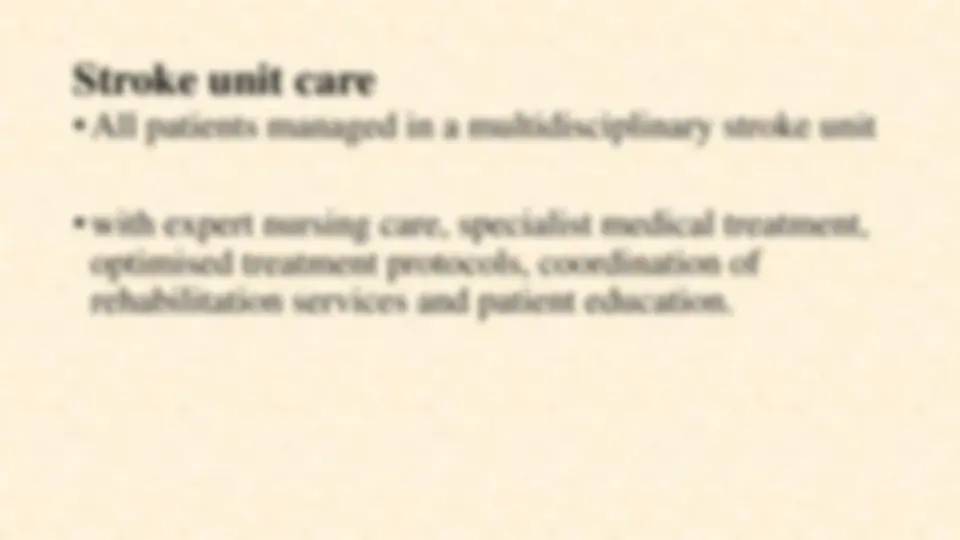
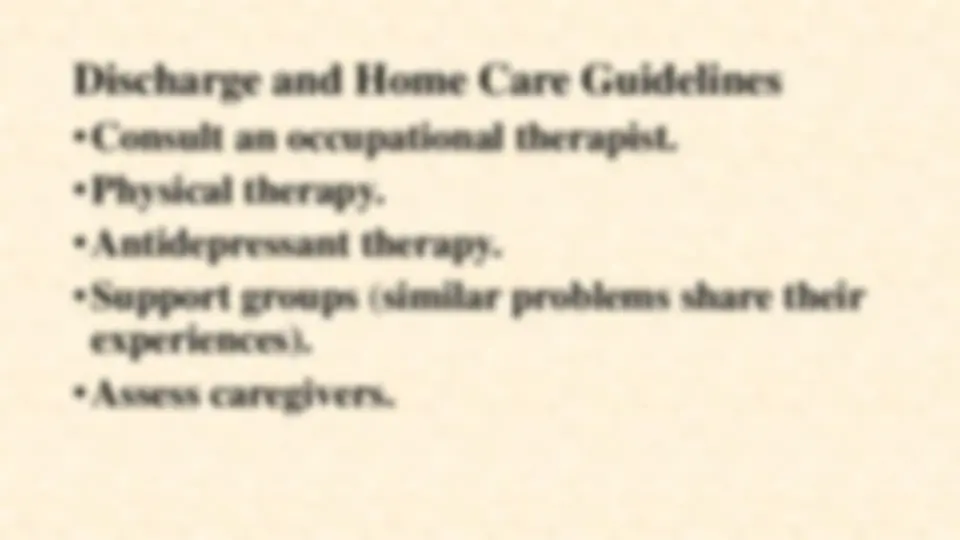
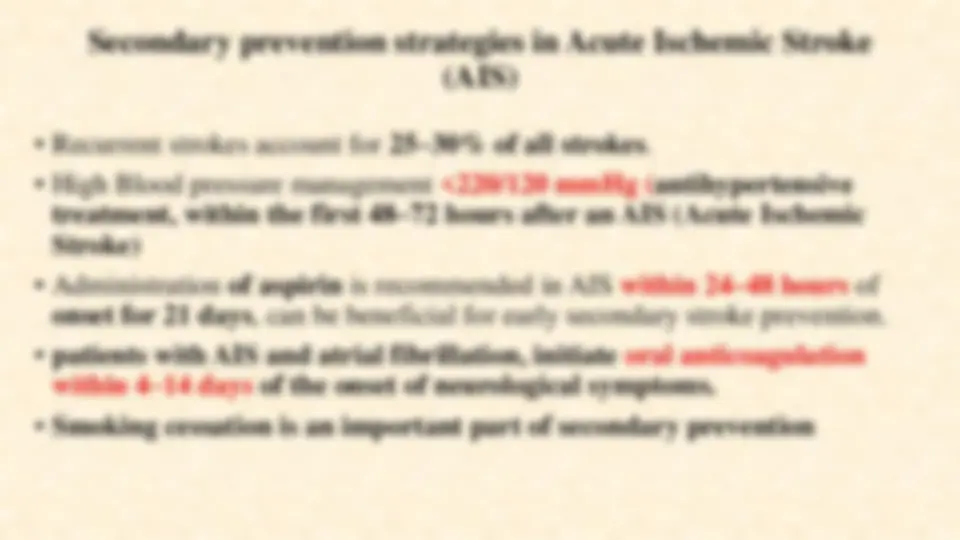



Study with the several resources on Docsity

Earn points by helping other students or get them with a premium plan


Prepare for your exams
Study with the several resources on Docsity

Earn points to download
Earn points by helping other students or get them with a premium plan
Community
Ask the community for help and clear up your study doubts
Discover the best universities in your country according to Docsity users
Free resources
Download our free guides on studying techniques, anxiety management strategies, and thesis advice from Docsity tutors
An in-depth analysis of nursing management in cerebrovascular accidents, also known as strokes. It covers the classes of stroke, risk factors, pathophysiology, clinical manifestations, assessment and diagnostic findings, medical management, surgical management, and nursing interventions. The document also discusses prevention strategies and discharge and home care guidelines.
What you will learn
Typology: Study Guides, Projects, Research
1 / 32

This page cannot be seen from the preview
Don't miss anything!

























Dr Shokoh Varaei Associate professor of TUMS